In this article, I have chosen to examine the dynamics governing the development of some companies we have heard and continue to hear about almost daily since 2009, a good 14 years back in the days.
One of the most significant stories I’ve delved into over the past few weeks is the bankruptcy of WeWork.
After reading extensively about it and considering data, analysis, and opinions from LinkedIn and various newsletters, I’ve decided to write down my long-held thoughts.
Source: https://www.chartr.co/newsletters/2023-11-01
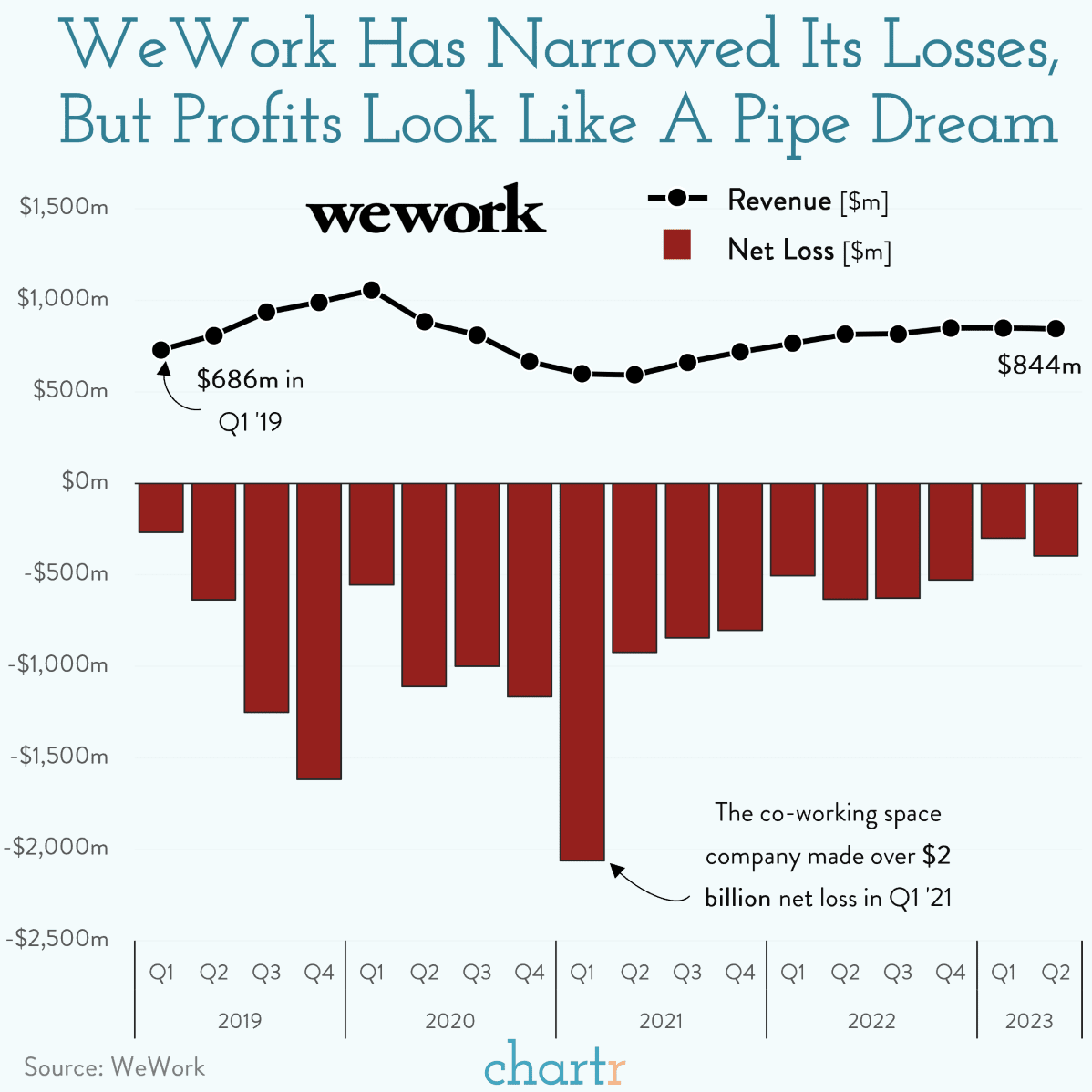
Timing and execution play a crucial role in the success of a business, a particular action, events we choose to make happen in our lives, and so on.
The term “timing” comes from the English verb “to time,” meaning “to measure time” or “to choose the right moment.”
In common usage, “timing” refers to the choice, planning, or action of doing something at the most opportune moment. The concept of timing is applicable in a wide range of contexts, from everyday situations to more complex aspects of life such as launching a product on the market, investing in stocks, or even in interpersonal communication, where saying the right thing at the right time can have a significant impact.
What does this preamble have to do with my personal story and my thoughts on the matter?
For those who don’t know me, on my italian website, I have tried to recount my experiences around Europe in international realities that, thanks to timing and the push of significant capital, have seen their valuations explode.
I was in UBER office in Lisbon when the bell rang on Wall Street, and the ride-handling went public in May 2019, raising $8.1 billion to reach a valuation of $80 billion.
Back then, the euphoria was contagious; it seemed to me that I was in the right place at the right time, and nothing made me feel “in a danger position” because it was impossible to predict what would happen in a year: a global pandemic.
How did a company like UBER behave in such an uncertain context where all of us were forced to stay home?
Uber Eats, was the answer. I worked for them in Portugal and Italy as a Sales Representative, for 1 year and 6 months, and I saw with my eyes the huge growth reported as a 200% year-over-year in revenue increase.
Below are the key figures related to the revenue increase of Uber Eats during the 2019-2022 period:
- In 2019, Uber Eats generated a turnover of $1.9 billion.
- In 2020, the turnover increased to $4.8 billion, showing significant growth from the previous year.
- In 2021, Uber Eats’ turnover rose to $8.3 billion, confirming steady growth in the food delivery sector.
- In 2022, Uber Eats recorded a substantial increase in turnover, reaching $10.9 billion, representing a 31% increase from the previous year.
Furthermore, the gross booking volume of Uber Eats consistently increased during the same period, rising from $14.5 billion in 2019 to $55.7 billion in 2022.
The question that naturally arose at the time was: how is it possible that a company burning so much money is still operational?
The main trends that have characterized Uber’s business evolution from the COVID era to the present are as follows:
- Business Diversification: Uber has sought to diversify its business to reduce its dependence on ride-sharing. The company has launched food and goods delivery services, which have recorded strong growth.
- Technological Innovation: Uber has continued to invest in technological innovation to enhance the experience of its customers and drivers. The company has launched new features, such as advance ride booking and ride-sharing.
- Geographic Expansion: Uber has continued to expand into new markets. The company operates in over 70 countries and 10,000 cities.
Some charts extracted from the Business of Apps article further clarify the growth that has characterized this business, allowing UBER to generate excellent results in a complex scenario like COVID time.
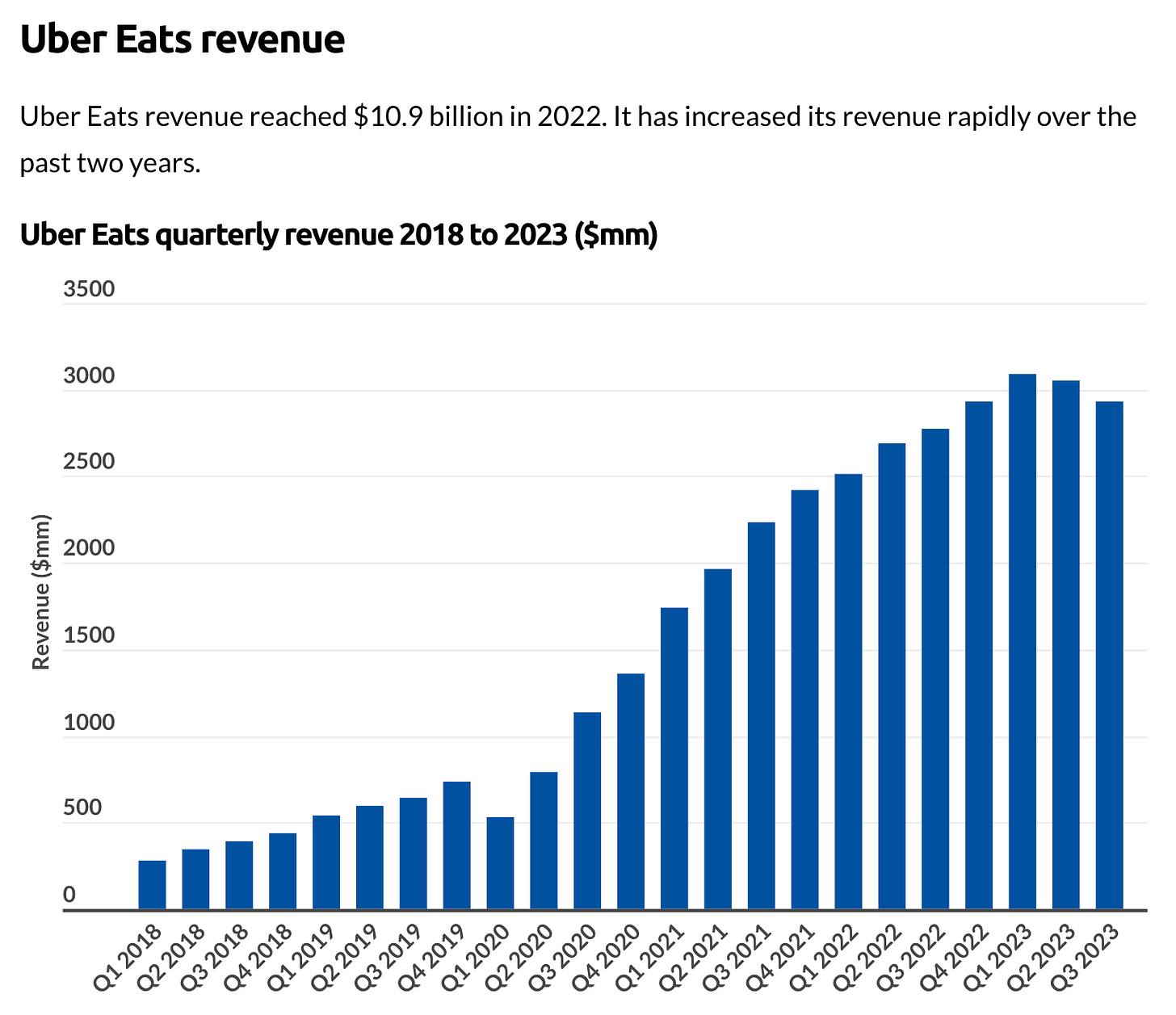
Uber Eats annual revenue 2017 to 2022 ($bn)
YearRevenue ($bn)
- 2017: 0.6
- 2018: 1.5
- 2019: 1.9
- 2020: 4.8
- 2021: 8.3
- 2022: 10.9
Sources: Bloomberg, Company data, Food Delivery App Report
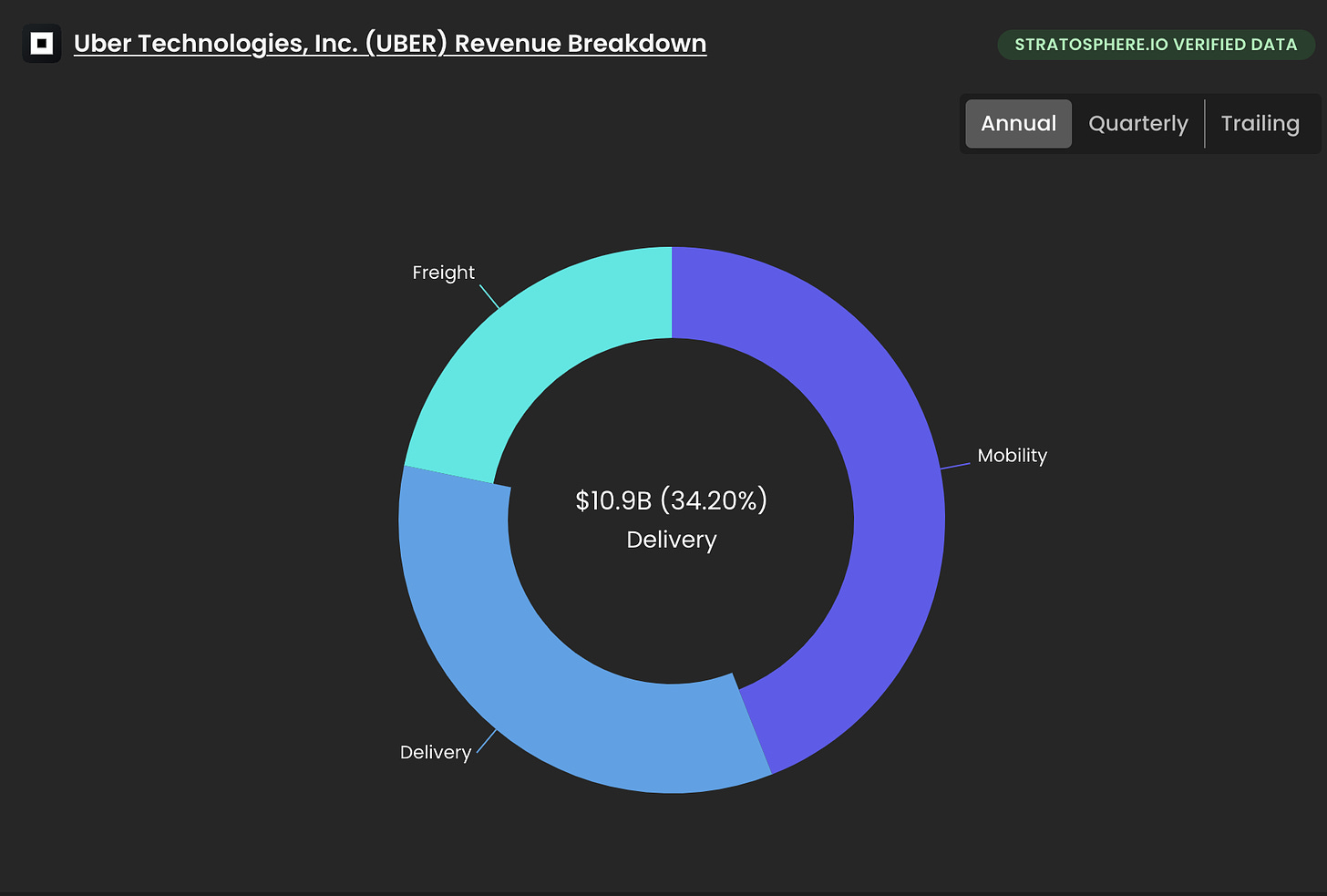
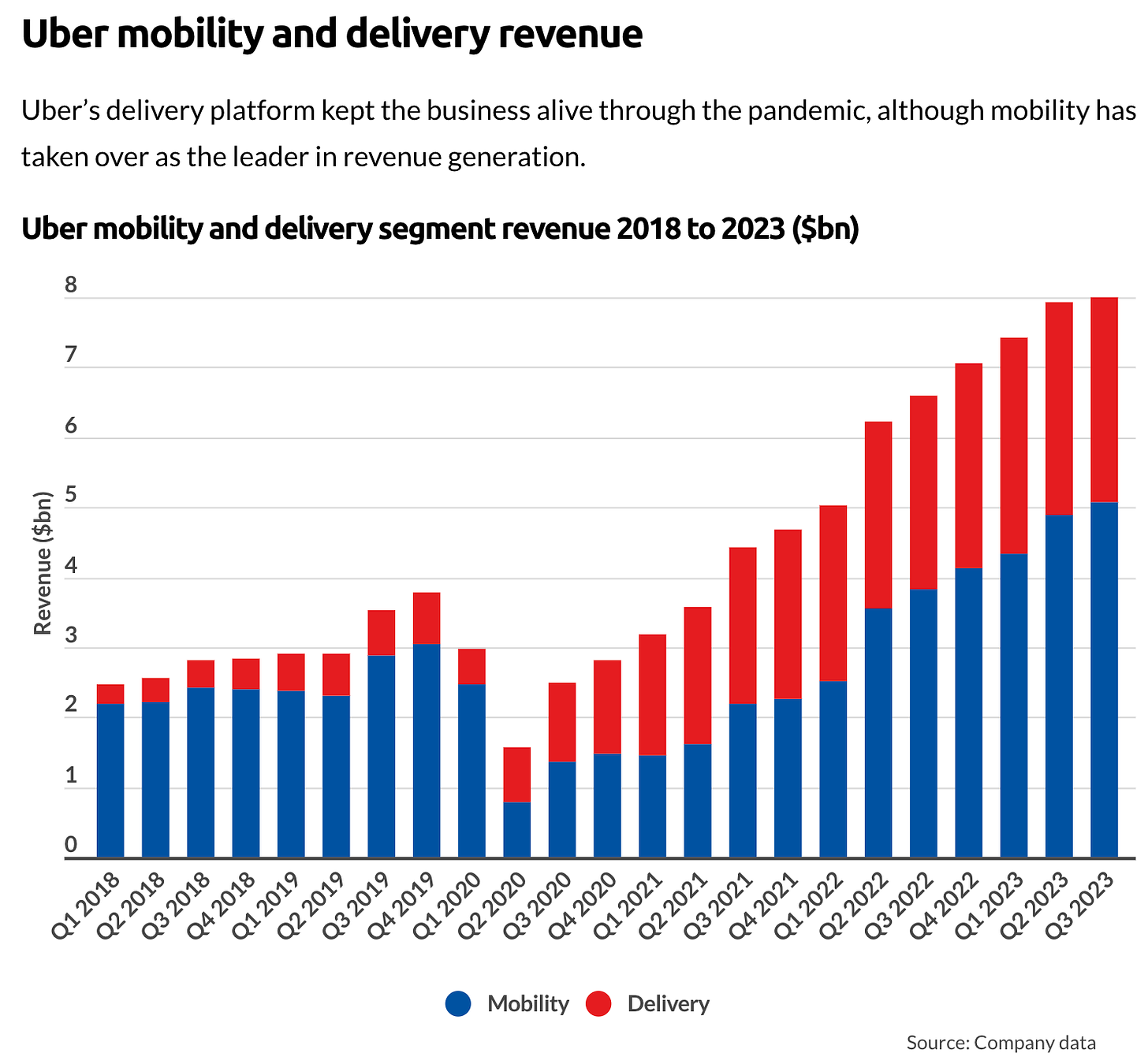
Uber Eats users
Uber Eats has approximately 88 million users, making it the most popular single app delivery service.
Uber Eats annual users 2016 to 2023 (mm)
YearUsers (mm):
- 2016: 5
- 2017: 9
- 2018: 15
- 2019: 21
- 2020: 66
- 2021: 81
- 2022: 85
- 2023: 88
Note: This is an estimate. Sources: Company data, Eater, Skift, ZDNet
How is all this reflected in the stock market?

The stock’s recovery in 2023 suggests a potential return to the peaks of 2021, when it reached an all-time high of around $60 per share.
The decision to invest in UBER in 2019 has led to a +30% gain to date. Will it continue to rise?
The difficult judgment is left to posterity.
In conclusion, I chose to analyze the case of UBER Eats because, despite my ultimately insignificant impact (Uber Eats exited the Italian market in 2023), it made me understand what it means to be part of a reality that at the right time in history garnered the interest of an increasing number of investors, leading to its stock market listing.
In total, since 2009, Uber has raised $38.4 billion in funding from institutional and private investors. Most of this funding was raised in Series A, Series B, and Series C financing rounds.
And now (in 2023, almost 2024), who will take the market by the hand and launch the next technological revolution capable of reproducing a new AI-based tech bubble?
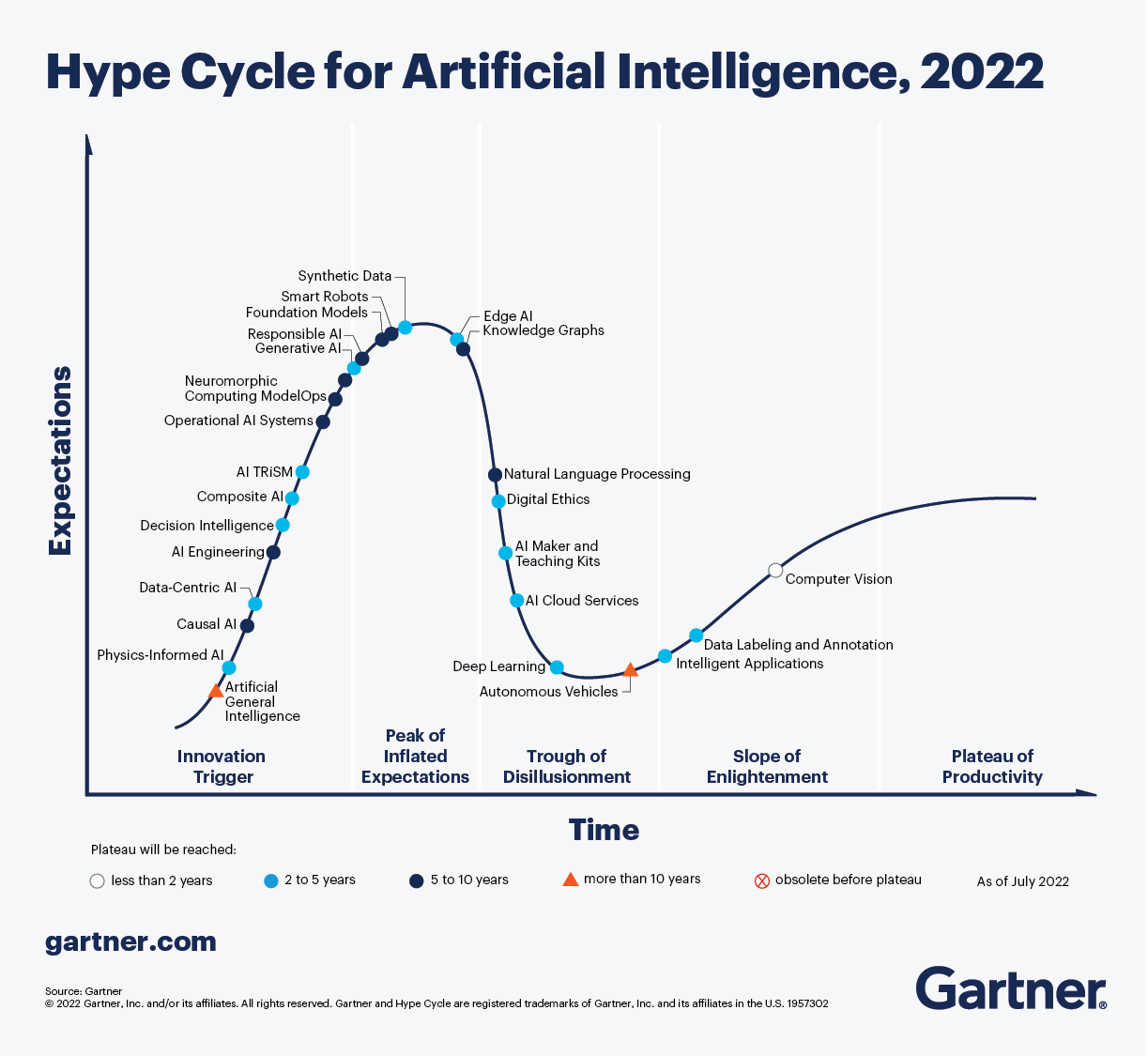
Should it be Open AI, which internally isn’t doing so well (Sam Altman being fired), the emerging force, the next trillion-dollar company churning out record numbers and thriving on hype and investments from big corporations like Microsoft?
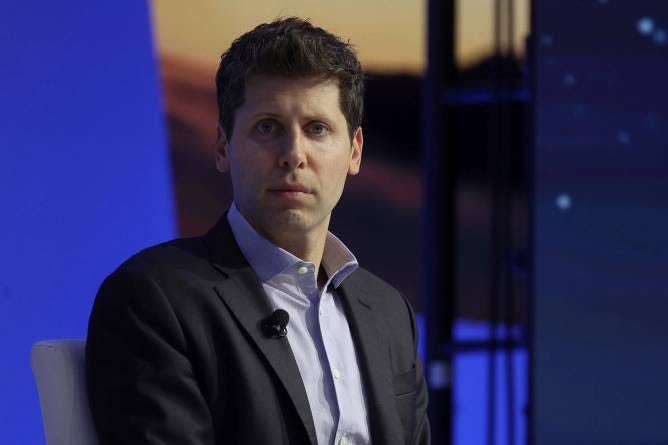
Is this really the technological revolution we will all witness in the coming years?
In a world so polarized, there seems no longer to be a clear vision of what will be, and I like to conclude this praise to timing in the world of tech companies with a video I stumbled upon almost by chance in my #youtubesessions.
A fascinating interview with Isaac Asimov that made me reflect on its relevance today:
Q: would you classify yourself as being an optimistic futurist?
A: “I’m a hopeful optimist in other words I hope things will be optimistic it is up to humanity to make the decisions we can decide to specialize in hatred and suspicion and end up with a nuclear war which will destroy everything or we can decide to cooperate and overcome our suspicions and hatreds in which case I see an endlessly receding horizon with no foreseeable way of coming to an end to greatness.”
Q: Of all the things that you see in the future what excit you the most as as a person and I mean just really turns you on when you think about if this wonderful thing could happen?
A: “oh what excites me most is the thought of an understanding of the human brain far deeper than any we have now. I’m hoping that by the use of computers that perhaps by the construction of artificial intelligence we can be able to understand the most complex conglomeration of matter that we know of the human brain which is at one and the same time our greatest hope and our greatest danger. It’s in the brain that all advances can be planned it’s in the brain that all dangers can be expected and I want to understand.”
